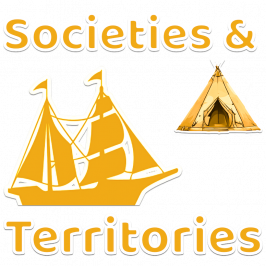In 1980, the Inuit populationPopulation comes from the Latin populus, meaning “the people.” We say population when we talk about a group... was young with 64% of Inuit under 25 years old. Inuit children and teenagers were well-taught in terms of Indigenous knowledge, but Europeans and other southerners thought of them as “uneducated”, because during those years most of them did not complete primary school. Only a few students pursued their secondary education. Those who chose to complete their studies had to leave their village to live in the southern cities. They then lived away from their parents in a world that was very different from what they were used to. Children and teenagers, who represent the future of the Inuit people, had many challenges, including poverty and unemployment in the villages. Suicide and substance abuse among youth were also troubling issues.
In 1980, people aged 65 years and older made up less than 3% of the Inuit populationPopulation comes from the Latin populus, meaning “the people.” We say population when we talk about a group.... In the Inuit community, the elders are responsible for passing on the language and culture. While elders tend to be older, not every old person is considered an elder. The title of “elder” is only used to describe someone who has earned a high level of respect in their community. Since the Inuit wrote very little, their traditions were passed on orally and the elders were the protectors of this oral traditionOral tradition is where knowledge, art, ideas and cultural material is received, preserved and transmitted from.... They transmitted the values of the Inuit community to children and other community members by telling stories and legends.
Since the Inuit community became sedentarySedentary means to live in one place, to grow one's own food, and to build more... in the 1950s, the elders and adults saw their traditional way of life change significantly. During this period, children were sent to schools far away from their villages and they were forbidden from speaking their Inuit language. More recently, efforts have been made to protect and value Inuit and other Indigenous cultures.
AuthorAuthor - A person who writes something Auteur - Une personne qui écrit quelque chose: Based on texts from the Récit de l’univers social. Adapted with additions by LEARN.Additional Images and More Recent Times!






